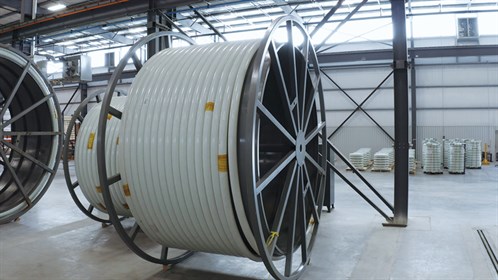New in Gas Processing Technology
Air Control Entech launches optical gas imaging drone
Remote inspection technology specialist Air Control Entech has developed a lightweight, optical gas imaging inspection system for use in global oil and gas inspection. Weighing less than 5,000 g, the unmanned aerial vehicle (UAV) is less than half the weight of other optical systems, allowing pinpoint visual accuracy of gas leak locations in challenging and previously inaccessible areas. It can also visually scan vast areas quickly.
The UAV’s camera, with digital zoom capability and real-time data transfer, provides high-definition gas imaging to accurately detect leaks beyond the scope of normal human vision. Color-coding helps identify gases. The system can spot leaks from more than 100 m away and can be used in a variety of upstream, midstream and downstream environments, including refineries, process plants and decommissioning projects.
Novatek, Nuovo Pignone partner on CO2 reduction
Novatek and Nuovo Pignone, part of Baker Hughes, signed a cooperation agreement aimed at reducing CO2 emissions. According to the agreement, the companies intend to cooperate in developing electrical and gas turbine solutions for natural gas and LNG production, as well as solutions for reducing CO2 emissions. The companies will also commence implementing a project to convert gas turbines to an H2-based fuel gas mix. Baker Hughes is a main equipment supplier for Novatek’s Yamal LNG and Arctic LNG 2 projects.
Baker Hughes debuts Onshore Composite Flexible Pipe
 |
Baker Hughes recently launched its next-generation Onshore Composite Flexible Pipe to address the corrosion and cost-of-ownership challenges with conventional steel pipe for the energy, oil and gas, and industrial sectors.
The flexible, lightweight reinforced thermoplastic pipe (RTP) offers an economic and environmentally friendly alternative to resource-intensive onshore steel pipes, for optimizing the core structure of flowline and oil and gas pipeline networks. A key feature of the pipe is its spoolable design, making it easier, faster and 20% more cost-effective to transport and install vs. steel pipe.
The pipe offers an economic solution for the transport of CO2 and H2, as well as the conversion of existing infrastructure to carry gases. In addition, the pipe’s non-corrosive materials can withstand contaminants without requiring chemical inhibitors, corrosion monitoring and inspection, or disruptive repair work, thereby reducing OPEX. GP




Comments